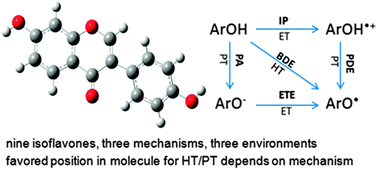Abstract
We have performed Density Functional Theory B3LYP/6-311++G** calculations of reaction enthalpies of

* Corresponding authors
a
J. Heyrovský Institute of Physical Chemistry, v.v.i., Academy of Sciences of the Czech Republic, Dolejškova 3, CZ-182 23 Prague 8, Czech Republic
E-mail:
jozef.lengyel@jh-inst.cas.cz
b Department of Physical Chemistry, Institute of Chemical Technology, Technická 5, CZ-166 28 Prague 6, Czech Republic
c
Institute of Physical Chemistry and Chemical Physics, Slovak University of Technology in Bratislava, Radlinského 9, SK-812 37 Bratislava, Slovakia
E-mail:
erik.klein@stuba.sk
We have performed Density Functional Theory B3LYP/6-311++G** calculations of reaction enthalpies of

 Please wait while we load your content...
Something went wrong. Try again?
Please wait while we load your content...
Something went wrong. Try again?
J. Lengyel, J. Rimarčík, A. Vagánek and E. Klein, Phys. Chem. Chem. Phys., 2013, 15, 10895 DOI: 10.1039/C3CP00095H
To request permission to reproduce material from this article, please go to the Copyright Clearance Center request page.
If you are an author contributing to an RSC publication, you do not need to request permission provided correct acknowledgement is given.
If you are the author of this article, you do not need to request permission to reproduce figures and diagrams provided correct acknowledgement is given. If you want to reproduce the whole article in a third-party publication (excluding your thesis/dissertation for which permission is not required) please go to the Copyright Clearance Center request page.
Read more about how to correctly acknowledge RSC content.
 Fetching data from CrossRef.
Fetching data from CrossRef.
This may take some time to load.
Loading related content
